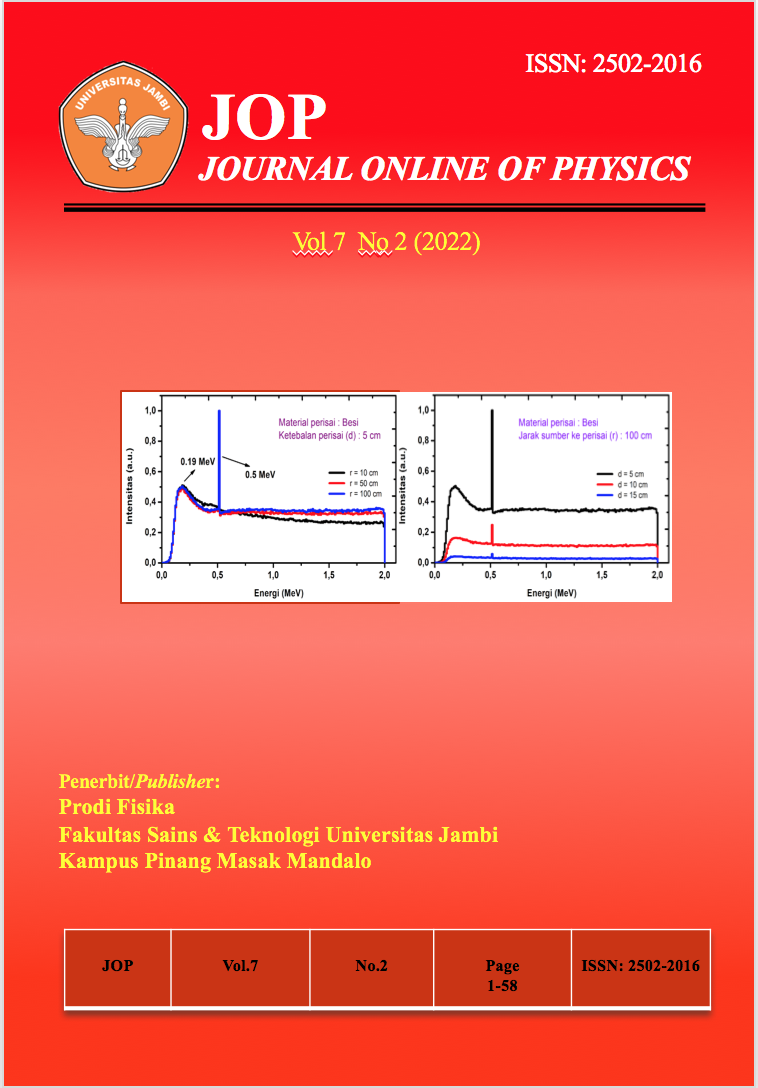A SIMPLE OF IOT BASED SOCIAL CONTACT TRACKING FOR INFECTIOUS PATIENT USING ULTRASONIC SENSOR: A PRELIMINARY STUDY
DOI:
https://doi.org/10.22437/jop.v7i2.18192Keywords:
ESP8266, infectious patient, IoT, tracking, social contactAbstract
One of the efforts to inhibit the transmission of infectious diseases caused by viruses and bacteria is through applying physical distancing. This study aims to create a contact monitoring tool for patients who have been infected with contagious diseases based on ultrasonic sensors and the internet of things (IoT). This instrumentation system consists of four ultrasonic sensors mounted on the left, right, front and rear sides. The sensor will detect the distance of the object that is approaching directly. Then, the measurement data of each sensor will be sent to the cloud and accessed through the Blynk application. The results show that the performance of each ultrasonic sensor is excellent and can be applied as a distance measuring device between patients and other people. The calibration results show that the ultrasonic sensor can measure a distance of 10-200 cm with an R squared value of 0.999-1. In addition, the ESP8266 also shows excellent performance. ESP8266 can send data to the cloud to be accessed and displayed in the form of a bar graph on a mobile phone. Thus, the overall system can be stated that the instrumentation system has functioned and is working well.Downloads
References
Andesfa, J., & Wildian, W. (2021). Rancang Bangun Sistem Peringatan Physical Distancing Sebagai Salah Satu Upaya Mencegah Penyebaran COVID-19. Jurnal Fisika Unand, 10(4), 453-460.
Aquarini, A. (2020). Pengaruh Kebijakan Politik terhadap Kepatuhan Physical Distancing Mencegah Penyebaran COVID-19. Anterior Jurnal, 19(2), 66-73.
Fauzansyah, F., & Septianus, S. (2022). ALAT PERINGATAN PHYSICAL DISTANCING MENGGUNAKAN SENSOR RCWL-0516 DAN ULTRASONIK HC-SR04 BERBASIS ARDUINO NANO. Lentera Dumai, 13(1).
Sumampouw, O. J. (2017). Pemberantasan Penyakit Menular. Deepublish.
Ilpaj, S. M., & Nurwati, N. (2020). Analisis pengaruh tingkat kematian akibat COVID-19 terhadap kesehatan mental masyarakat di Indonesia. Focus: Jurnal Pekerjaan Sosial, 3(1), 16-28.
Lestari, S., & Wibowo, A. (2020). Penyuluhan Mengenai Pentingnya Physical Distancing, Social Distancing, Serta Program Phbs Untuk Memutus Rantai Penyebaran Covid-19. Prosiding Konferensi Nasional Pengabdian Kepada Masyarakat Dan Corporate Social Responsibility (PKM-CSR), 3, 933-942.
Etikasari, B., Puspitasari, T. D., Kurniasari, A. A., & Perdanasari, L. (2020). Sistem informasi deteksi dini Covid-19. Jurnal Teknik Elektro dan Komputer, 9(2), 101-108.
Muzawi, R., Efendi, Y., & Rio, U. (2020). Prototype Alat Physical Distancing Covid-19 Menggunakan Arduino Uno. JOISIE (Journal Of Information Systems And Informatics Engineering), 4(2), 121-127.
Saraswati, P. S. (2020). Kebijakan Hukum Terhadap Penanganan Pandemi Covid-19 Di Indonesia. Kertha Wicaksana, 14(2), 147-152.
Martias, I., & Aldo, N. (2020). Studi Tingkat Kepatuhan Masyarakat Provinsi Kepulauan Riau Untuk Melaksanakan Social/Physical Distancing Dalam Upaya Mencegah Penyebaran Virus Covid-19. Sulolipu: Media Komunikasi Sivitas Akademika dan Masyarakat, 20(2), 222-226.
Riyadi, R., & Larasaty, P. (2020). Faktor Yang Berpengaruh Terhadap Kepatuhan Masyarakat Pada Protokol Kesehatan Dalam Mencegah Penyebaran Covid-19. In Seminar Nasional Official Statistics (Vol. 2020, No. 1, pp. 45-54).
WHO. (2020). https://www.who.int/ westernpacific/emergencies/covid-19/ information/physical-distancing. (Accessed 20 May 2022)











